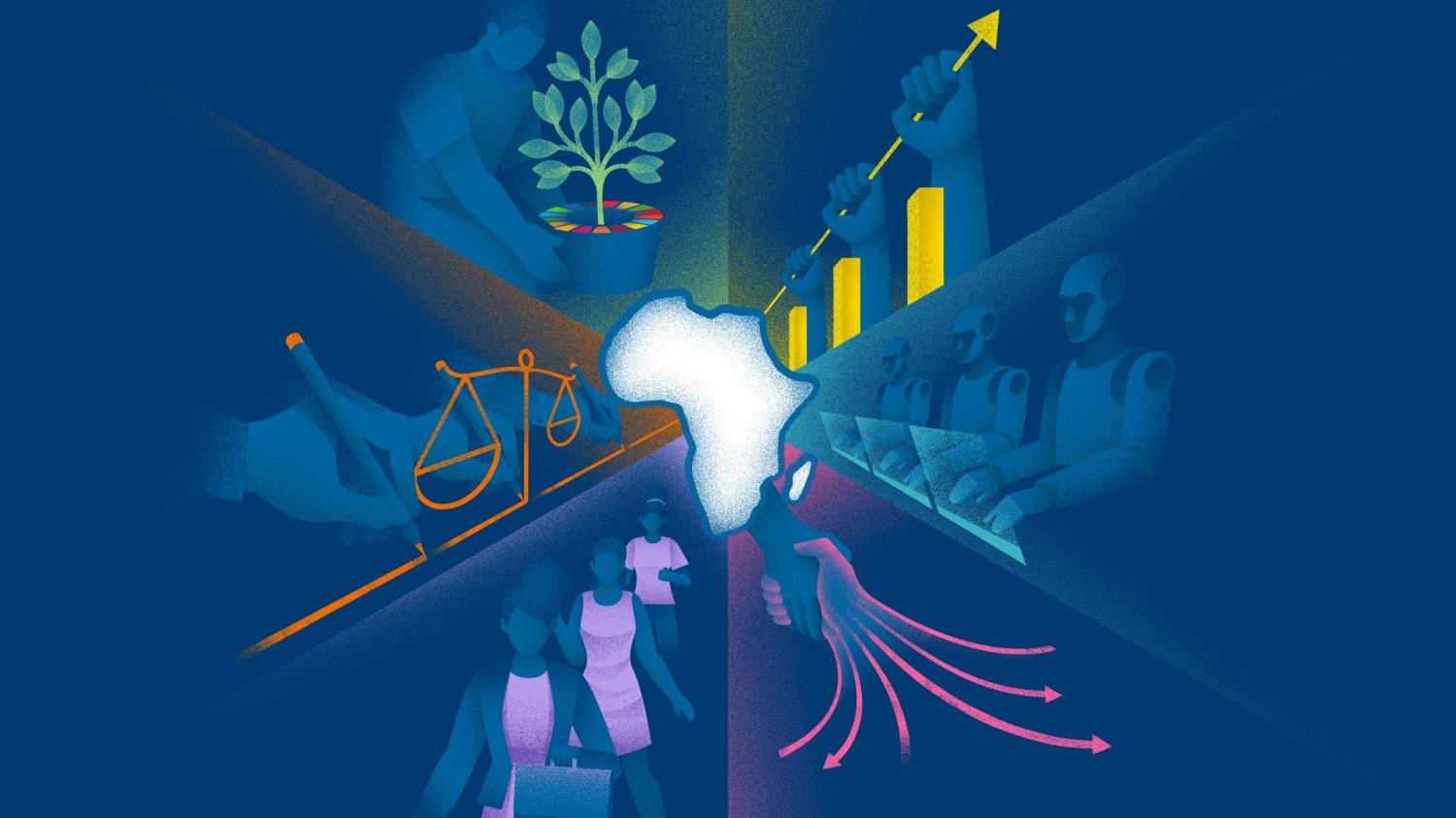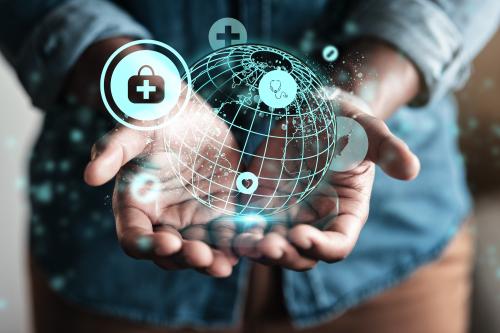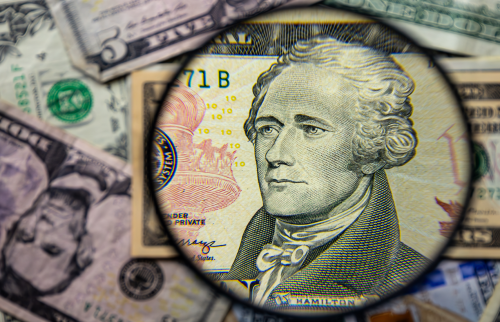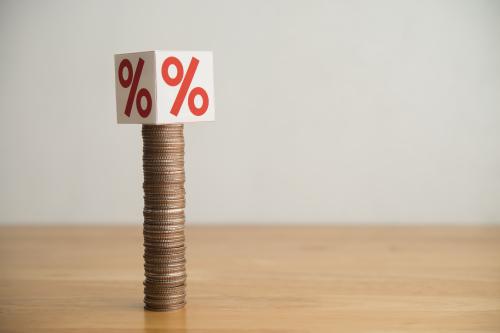This viewpoint is part of Chapter 1 of Foresight Africa 2025-2030, a report with cutting-edge insights and actionable strategies for Africa’s inclusive and sustainable development in the run-up to 2030. Read the full chapter on Africa’s inner strength.
The Pan-African Payment and Settlement System, which supports cross-border payments in national currencies ... will help cut the $5 billion in foreign exchange costs associated with intra-African payments.
Success in reaching the Sustainable Development Goals (SDGs) in Africa has hinged on the availability of the financing needed to implement the necessary reforms. Current spending levels have left a roughly $800 billion gap in funding for reaching the goals by 2030.1 Both the IMF and the World Bank have taken steps to alleviate this need. However, they cannot do it alone; regional banks need to step up and fill this gap.2 These institutions already have the development frameworks and monitoring teams in place to ensure financial effectiveness. The African Development Bank, for example, has already partnered with the United Nations Development Programme to accelerate investments in green and blue economies in Africa.3 In September 2024, during the Summit of the Future, leaders of the United Nations met with the heads of ten multilateral development banks (MDBs) to discuss steps that need to be taken to accelerate progress toward the SDGs. The range of activities discussed was wide, and included scaling-up MDB finance capacity, boosting action on climate adaptation, and generating investment from the private sector.4
Afreximbank has worked to contribute to the attainment of the SDGs through several critical avenues, namely, implementing the African Continental Free Trade Agreement (AfCFTA), powering industrial development, investing in critical energy, establishing industrial and trade-enabling infrastructure, building viable creative industries that support youth and women, and facilitating improved access to quality health care.5 Many challenges still hinder attempts to fully realize these outcomes, such as a lack of financing and effective coordination with governments. Nevertheless, overcoming these challenges and implementing these initiatives, which have the potential to create jobs, improve livelihoods, and reduce poverty in Africa, are the primary focus of Afreximbank.
Afreximbank supports the implementation of the AfCFTA6 by directly financing intra-African trade and investments as well as indirectly, through AfCFTA-facilitating initiatives. The latter include:
- The Pan-African Payment and Settlement System, which supports cross-border payments in national currencies.7 This system will help cut the $5 billion in foreign exchange costs associated with intra-African payments and the time to make such payments from an average of 5 days to under 12 seconds, all while promoting financial inclusion by formalizing the $30 billion annually of informal sector cross-border trade.8,9
- The AfCFTA Adjustment Fund,10 which supports eligible AfCFTA-participating states to adjust in an orderly manner to the new AfCFTA trade regime.
- The African Collaborative Transit Guarantee Scheme, which helps smooth cross-border transportation and saves the continent roughly $300 million annually in transit costs.11
These and other Afreximbank-sponsored AfCFTA-enablers are helping to optimize the benefits of freer intra-African trade, including raising income by 7% (or $450 billion) by 2035 and lifting 40 million people out of extreme poverty.12 Collectively, these initiatives take Africa closer to reaching SDGs 8 (decent work and economic growth), 10 (reduced inequality), 11 (sustainable cities and communities), 12 (responsible consumption and production), 13 (climate change), and 17 (partnerships for the goals).
Afreximbank and its investee company, Arise Integrated Industrial Platform, actively invest in developing special industrial zones.13 Special industrial zones have already been developed in Benin, Chad, Gabon, Rwanda, and Togo, and projects are underway in Botswana, Côte d’Ivoire, the Democratic Republic of the Congo, Kenya, Malawi, Nigeria, Zambia, and more. These special industrial zones are creating continental value chains that are helping to boost intra-African trade and investments and providing opportunities for small businesses, particularly those which are run by or employ youth and women. The Gabon Special Economic Zone has so far created over 20,000 direct and indirect jobs and attracted about $1.6 billion in foreign direct investments, in turn assisting Gabon in reaching SDG 1 (no poverty).14 This is expected to grow as more investors take up opportunities in the zone. The textile and garment units of Togo’s Adétikopé Industrial Platform, as well, would create approximately 20,000 direct jobs and transform around 30,000 tons of locally produced cotton per year if investors choose to participate.15 The African Union has promoted such initiatives and referred to special economic zones, a category under which these activities fall, as “one of the main instruments that stimulate economic reforms, promote quality foreign direct investments (FDIs), and accelerate industrialization across the continent.”16
Given the dominance of youth and women in the creative economy, this industry also represents a vital avenue for promoting their economic development.17 Afreximbank’s $2 billion Creative Africa Nexus (CANEX) initiative is helping to bridge the funding gap in Africa’s creative industries.18 CANEX is providing funding for infrastructure and boosting activities throughout the creative value chains—from sports to movies, music, fashion, arts and crafts, culinary and gastronomy, and other related activities. In addition to financing, support includes initiatives to commercialize Africa’s creative content and protect intellectual property rights through the newly established company CANEX Creations Incorporated.19 These protections will help increase Africa’s share of the global creative economy, valued at $2 trillion. Other interventions involve addressing market access opportunities, capacity and skills development, and exchange. Each of these initiatives push the continent closer to meeting SDG 8 (decent work and economic growth) by addressing the high level of unemployment within the large working-age youth population across Africa.
The health sector is another significant priority for Afreximbank. The Bank is heavily investing in creating world-class medical facilities across Africa to improve access to quality health care. For instance, it has invested about $300 million in developing the African Medical Centre of Excellence in Abuja, Nigeria, a quaternary-level medical center focused on oncology, haematology, cardiology, and general care.20 Similar facilities will soon be built in other parts of Africa. Investments are also being provided to upgrade or expand local medical facilities in many African countries. Afreximbank is not the only development bank to engage in such activities. Many development banks are working in this area with large investment projects.21 Until recently, these projects were occurring simultaneously but without coordination, which has, at times, led to duplicating efforts while leaving many needs unaddressed.22 To begin to address this issue, the African Development Bank and its partners recently created the “Guidance for developing inclusive health infrastructure” report, which identifies three infrastructure priorities to create a more evenly-distributed health network. These include connecting primary health care infrastructure to programs, improving comprehensive infrastructure needed for public goods such as sanitation and water, investing in the development of secondary and tertiary health care facilities that include clinics for specialized care, and implementing diagnostic infrastructure.23 Investments that meet standardized guidelines are more likely to provide equal health care access and availability across Africa, creating a higher likelihood of addressing the gaps in achieving SDG 3 (good health and well-being).
Access to steady electricity is still elusive for many across the continent, hindering much of the progress toward most of the SDGs. Afreximbank is actively supporting various investments in energy infrastructure. The construction of the Rufiji dam in Tanzania,24 which is expected to increase access to electricity for millions of Tanzanians, bringing access from 67.5% to an unprecedented 100% by 2025, is one such initiative supported by Afreximbank.25 The spillover effects are enormous in Tanzania and across East Africa, accelerating progress toward SDG 3 (good health and well-being). The World Bank Group and the African Development Bank are also working to provide access to electricity to 300 million people across sub-Saharan Africa through “Mission 300.” If successful, this initiative will address half of the continent’s current electricity needs.26 However, even with ambitious initiatives such as this one, more work is needed.
The path towards realization of the SDGs is clear. Regional development banks across Africa and their partners must continue to invest in job creation opportunities that will help build local wealth and lift millions out of poverty. In this regard, continued investments and policy support for these critical initiatives, among others, remain vital to attaining the SDGs. However, banks cannot do this without the support of African governments, which must prioritize working with institutions that are at the core of tackling Africa’s development challenges, particularly African multilateral development institutions such as Afreximbank. Large financing gaps remain for Africa to achieve the SDGs by 2030. Africa’s multilateral financial institutions have an opportunity to provide the investments necessary to bridge them.
-
Acknowledgements and disclosures
The author extends his gratitude to Nichole Grossman, research analyst at Brookings Africa Growth Initiative, for her outstanding research and editorial support, and thanks Richman Dzene, director of research, and Doreen Nambafu, senior research analyst, both in his office, for the research support.
-
Footnotes
- Amar Bhattacharya et al., “Financing a Big Investment Push in Emerging Markets and Developing Countries for Sustainable, Resilient and Inlcusive Recovery and Growth.” (London; Washington D.C.: Grantham Research Institute on Climate Change and the Environment; Center for Sustainable Development at Brookings Institution, May 2022).
- Hassatou Diop N’Sele and Gustavo De Rosa, “Opinion: Time to Empower Regional Development Banks for SDG Financing,” African Development Bank Group (blog) (Abidjan: African Development Bank Group, November 18, 2022), https://www.afdb.org/en/news-and-events/opinion-time-empower-regional-development-banks-sdg-financing-56621.
- “UNDP and African Development Bank Explore SDG Investments in Africa’s Blue and Green Economies | Private Finance for the SDGs,” UNDP, accessed December 19, 2024, http://sdgprivatefinance.undp.org/resources/news/undpand-african-development-bank-explore-sdg-investments-africas-blue-and-green.
- “UN, Development Banks Partner for Sustainable Development Goals,” IsDB, September 22, 2024, https://www.isdb.org/news/un-development-banks-partner-for-sustainable-development-goals.
- “About Us,” African Export-Import Bank, accessed December 10, 2024, https://www.afreximbank.com/our-bank/about-us/
- “About the AfCFTA,” African Union, accessed December 3, 2024, https://au-afcfta.org/about/.
- “How It Works – Make Instant and Secure Cross-border Payments in Local Currencies Across Africa,” PAPSS, October 20, 2021, https://papss.com/how-it-works/.
- David Luke, “Understanding African Trade Is Key to Helping its Development,” LSE Research for the World, January 24, 2023, https://www.lse.ac.uk/research/research-for-the-world/economics/understanding-african-trade-is-key-to-helping-its-development.
- “UNCTAD Data Hub,” United Nations, accessed November 24, 2024, https://unctadstat.unctad.org/EN/.
- Benedict Okey Oramah, “Facilitating the Transformational AfCFTA: Tools for Eliminating Bottlenecks,” Brookings Institution, March 11, 2021, https://www.brookings.edu/articles/facilitating-the-transformational-afcfta-tools-foreliminating-bottlenecks/.
- “Afreximbank Issues the First-Ever Multi-Border Transit Bond in Zambia under the Afreximbank African Collaborative Transit Guarantee Scheme (AATGS),” APO Group – Africa Newsroom, October 24, 2023, https://afreximbank.africanewsroom.com/press/afreximbank-issues-the-firstever-multiborder-transit-bond-in-zambia-under-the-afreximbankafrican-collaborative-transit-guarantee-scheme-aatgs?lang=en.
- “Free Trade Deal Boosts Africa’s Economic Development,” World Bank, February 7, 2023, https://www.worldbank.org/en/topic/trade/publication/free-trade-deal-boosts-africa-economic-development.
- “Arise Integrated Industrial Platforms – Making Africa Thrive,” Arise Integrated Industrial Platforms accessed December 10, 2024, https://www.ariseiip.com/.
- “Home,” Gabon Special Economic Zone, May 13, 2024, https://gsez.com/en/.
- “Manufacturing,” PIA Togo, April 7, 2023, https://pia-togo.com/business-verticals/manufacturing/.
- “African Special Economic Zones: Engine for Resilience and Accelerator for Sustainable Industrial Value Chains Development.” African Union, accessed December 19, 2024, https://au.int/en/pressreleases/20221201/africanspecial-economic-zones-engine-resilience-and-accelerator-sustainable.
- According to M’Hammdi and Jaïdi, the cultural and creative industries in Africa employ more people aged 15-29 than any other sector (20% of total employment in those sectors); Nezha Alaoui, M Hammdi, and Larabi Jaïdi, “The Cultural and Creative Industries in Africa and Latin America: A Diver for Transatlantic Cooperation,” (Rabat: Policy Center for the New South, September 2023), https://www.policycenter.ma/sites/default/files/2023-09/Report%20-%20The%20Cultural%20and%20Creative%20Industries%20in%20Africa%20and%20Latin%20America_0.pdf.
- Afreximbank, “Afreximbank Announces Aim to Double CANEX Funding to $2 Billion to Boost Africa’s Creative Economy” African Export-Import Bank, October 18, 2024, https://www.afreximbank.com/afreximbank-announces-aimto-double-canex-funding-to-2-billion-to-boost-africas-creative-economy.
- “Afreximbank’s Creative Africa Nexus (CANEX) Announces the Release of Groundbreaking EP ‘One Drum,’ – African Export-Import Bank,” August 16, 2024, https://www.afreximbank.com/afreximbanks-creative-africa-nexus-canexannounces-the-release-of-groundbreaking-ep-one-drum.
- “Africa Finance Corporation Commits up to US$40 Million Equity Investment in the African Medical Centre of Excellence (AMCE Abuja) to Revolutionise Healthcare Advancements in West Africa,” African Finance Corporation 2024, https://www.africafc.org/news-and-insights/news/africa-finance-corporation-commits-up-to-us-40-million-equity-investment-in-the-african-medical-centre-of-excellence-amce-abuja-to-revolutionise-healthcare-advancements-in-west-africa.
- “WHO and Multilateral Development Banks Kick off US$ 1.5 Billion Primary Health Financing Platform with New Funds and Launch of First Investment Plans in 15 Countries,” Reliefweb, September 23, 2024, https://reliefweb.int/report/burundi/who-and-multilateral-development-banks-kick-us-15-billion-primary-health-financing-platform-new-funds-and-launch-first-investment-plans-15-countries-enru; “African Development Bank and Partners Unveil Guidance to Transform Healthcare Infrastructure in Africa,” African Development Bank Group, December 12, 2024, https://www.afdb.org/en/news-and-events/african-development-bank-and-partners-unveil-guidance-transform-healthcare-infrastructure-africa-79525; “IFC and Development Partners Make Landmark Health Care Investment in East and Southern Africa,” IFC, November 23, 2019, https://www.ifc.org/en/pressroom/2019/ifc-and-development-partners-make-landmark-health-care-investment-in-east-and-southern-africa.
- Olusesan Ayodeji Makinde et al., “Duplication of Effort across Development Projects in Nigeria: An Example Using the Master Health Facility List,” Online Journal of Public Health Informatics 10, no. 2 (September 21, 2018): e208, https://doi.org/10.5210/ojphi.v10i2.9104.
- “African Development Bank and Partners Unveil Guidance to Transform Healthcare Infrastructure in Africa,” African Development Bank, December 12, 2024, https://www.afdb.org/en/news-and-events/african-development-bank-andpartners-unveil-guidance-transform-healthcare-infrastructure-africa-79525.
- Marwa Abo Almajd, “Afreximbank Extends $500mln Credit Facility to Elsewedy Electric and Arab Contractors Company,” (Zawya, November 13, 2023), https://www.zawya.com/en/projects/utilities/afreximbank-extends-500mlncredit-facility-to-elsewedy-electric-and-arab-contractors-company-idp8hycv.
- Saleh Pamba et al., “The Report on Responses and Mitigations: Beyond the True Cost of Power,” (Tanzania High Commission New Delhi, India, March 2019), https://www.in.tzembassy.go.tz/uploads/SGR_Report.pdf.
- “Connecting Millions to Electricity in Africa With Mission 300,” World Bank, September 19, 2024, https://www.worldbank.org/en/news/feature/2024/09/19/five-ways-the-world-bank-will-achieve-mission-300.
The Brookings Institution is committed to quality, independence, and impact.
We are supported by a diverse array of funders. In line with our values and policies, each Brookings publication represents the sole views of its author(s).




Commentary
Pathways to sustainable development in Africa: Afreximbank’s role
May 22, 2025